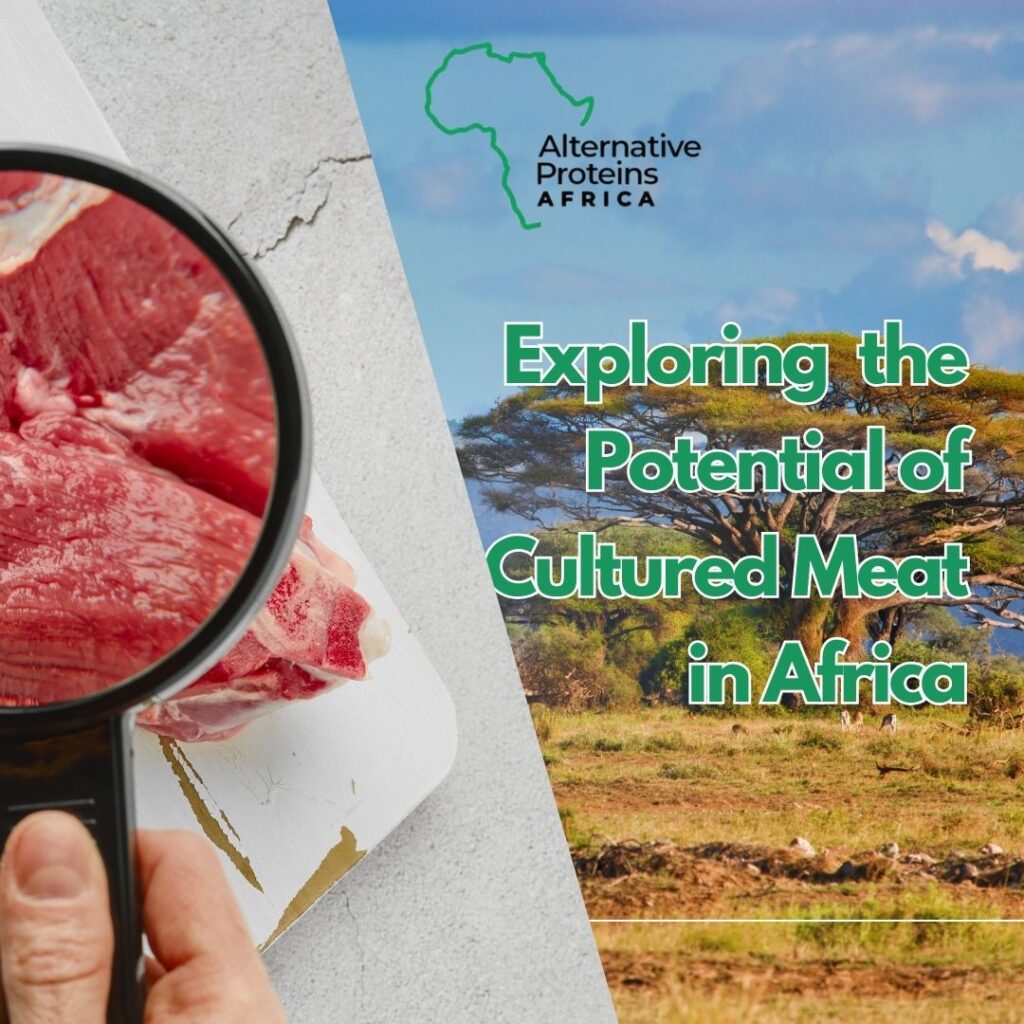
In the past few years, there has been a significant shift in the global food industry towards sustainable and innovative alternatives to food production. Environmental concerns, animal welfare, and food security drive this shift. Among the different solutions, cultured meat, though a more recent innovation, is an option that can potentially transform our diets and the entire food system. This is especially relevant for Africa, known for its culturally rich food.
Cultured meat and the different names
Cultured or cultivated meats are alternative proteins produced as substitutes to farming livestock solely for meat production. This involves the growing of meat outside animals. Hence, they are also called clean meat or in vitro meat.
This practice is known as cellular agriculture, where identified cells from species of interest are grown on support materials called scaffolds, which form the basis for tissue development. The cells feed on specific nutrient media (such as the fetal bovine serum used in cultured meat) in an environment that supports the growth of the cells. In the case of cultured meat, cells are isolated through animal biopsy, a surgical procedure involving removing particular tissues from animals.
Therefore, cultivated meat is grown in the laboratory using technologies to produce meat directly from stem cells. As a result, they are also called lab-grown or cell-based meat. So, at the cellular level, cultured meat resembles conventional meat.
The history of cultured meat
Although it wasn’t until recently that the sale of cultured meat got approved in countries like Singapore and the USA, producing meat directly from animal cells without the inefficient process of animal farming can be dated back to about a century ago.
In 1931, a former UK prime minister, Winston Churchill, predicted, “We shall escape the absurdity of growing a whole chicken in order to eat the breast or wing, by growing these parts separately under a suitable medium. Synthetic food will, of course, also be used in the future.”
The first cultured meat was eaten by humans twenty years ago, and ever since, the trajectory of cultured meat has taken a significant leap. Last month was exactly a decade since the world was introduced to a lab-grown burger cooked and eaten at a news conference in London.
Why Cultured Meat?
It should be re-emphasized that traditional animal agriculture is associated with unsustainable and unreliable production of food. Its adverse impacts on our environment, challenged health system, and inhumane animal welfare practices, among several others, have called for more sustainable food options and alternatives. Research has pointed out that clean meat can significantly reduce greenhouse gas emissions and lower land and water footprint. Based on these considerations, cultured meat then comes into the picture.

Where does Africa stand in the cultured meat industry?
It has been projected that in less than three decades from now, a quarter of the global population will be African. This suggests a corresponding spike in our demand for meat or protein rich diets. This, without doubt, calls for better diversification of our protein sources.
It is important to emphasize that African countries are faced with challenges of malnutrition, food insecurity, poverty, and an ever-increasing population. Therefore, devising a tailor-made approach to solving these problems is of the essence. This will ensure that the deployed interventions achieve the set goals.
To address our protein needs and, in fact, several other challenges, such as overgrazing and deforestation due to intensive animal agriculture, cultured meat is valuable. Cultured meat, as a major alternative protein source, offers an essential solution to these challenges. It is an exact mimicry of animal-source meat, thus ensuring that consumers are satisfied.
In the African landscape, South Africa is taking the lead in the cultivated meat industry. A survey in 2021 found that 60% and 53% of South Africans were willing to try and buy cultured meat, respectively. This indicates that the products are likely to be adopted.
Similarly, a South African cellular food-tech company produced the first cultivated meat last year. Yet, no country in Africa has approved cultured meat for commercial sale. This points out that much work still needs to be done.
Challenges
Challenges to the production of cultivated meat within the continent have been largely due to a lack of capacity for the complex production system and technologies needed to produce and scale cultured meat.
Other challenges expected to face lab-grown meat when it eventually gets to the market in Africa include:
- Poor consumer behavior due to low consumer awareness and cultural beliefs.
- Higher pricing of cultured meat.
- Its relative taste.
Also, cultured meat is in its early days, so its purported health benefits compared to traditional meat still need to be proven and tested.
What must be done?
With the right investment efforts in research and development, production processes can be efficiently optimized. Also, consumers can be better informed and enlightened with an intensified awareness drive.
Amazingly, Forbes Africa reported that research has identified that beyond ethical considerations, economics, accessibility, and quality of meat alternatives are major drivers of success in this sector.
In conclusion, cultivated meat is significant in African meals as the world looks for sustainable solutions for our food system. To make the innovation more native, locally sourced and sustainable ingredients for the cell culture media should be embraced. This will help reduce costs, enhance accessibility, and contribute to the sustainability of cultivated meat production.

